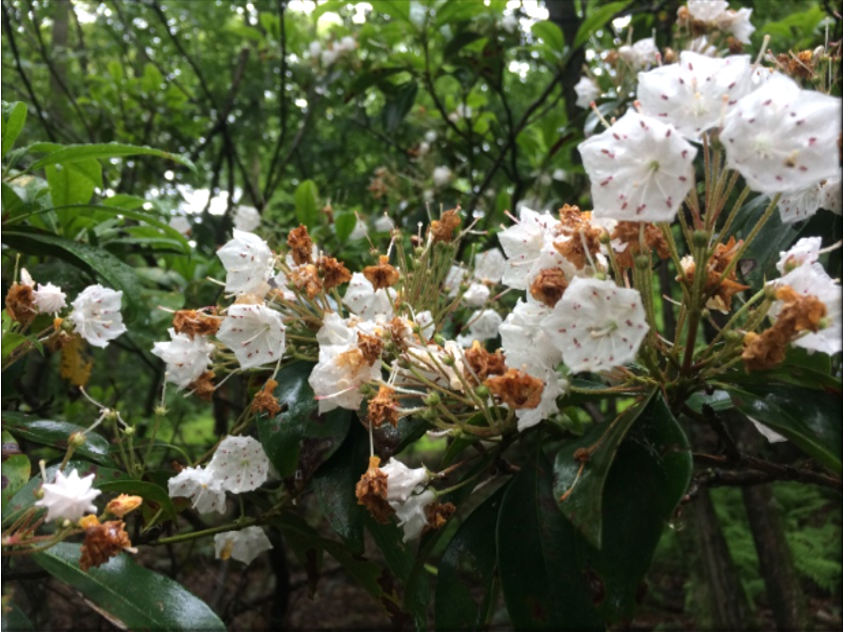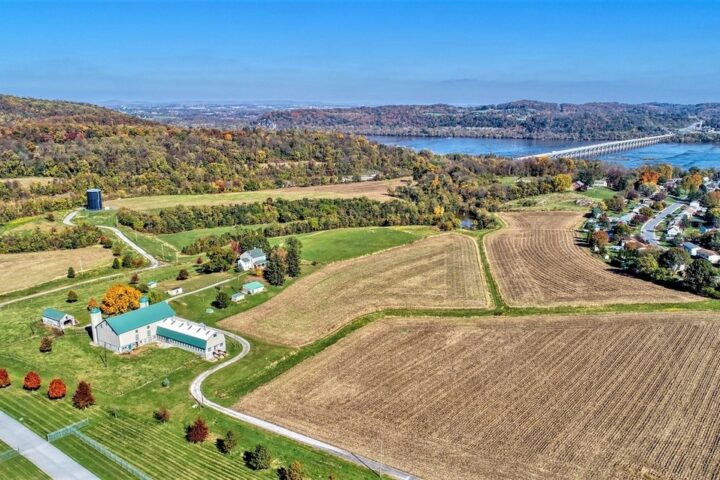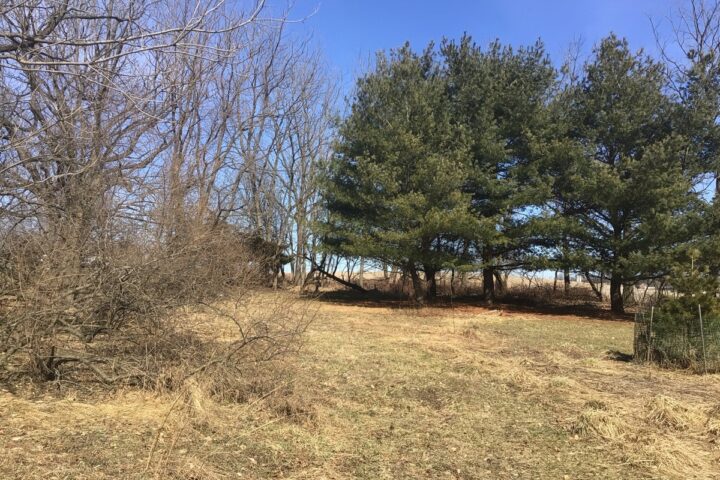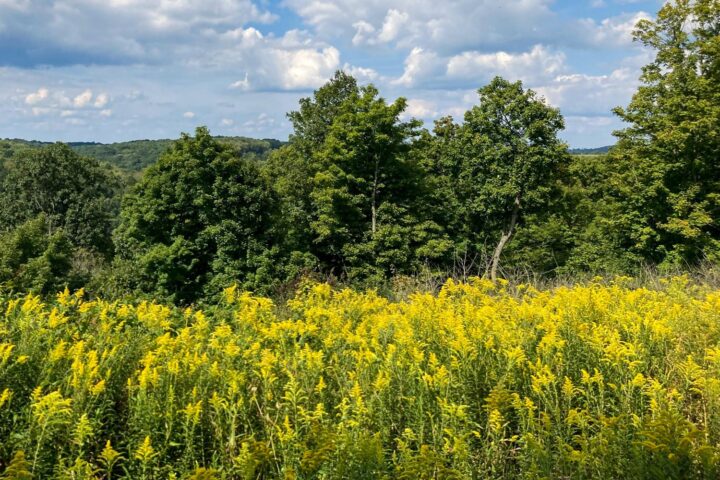This post was written by Sally Zaino of Manada Conservancy about the first summer on one of Manada’s newest preserves.
By the time you read this, the mountain laurel will be finished blooming. But as of this writing, it is decorating our woodlands with its pale pink flowers, convoluted stems, and glossy leaves. It’s blooming on the rocky slopes of our Appalachians. It is also blooming on the 130 beautiful acres on Peters Mountain now protected in perpetuity by Manada Conservancy.

The Kittatinny Corridor, of which this land is a part, has high conservation value—a crucial migration highway, climate change resiliency, biodiversity, and water quality. It is within the designated habitat area for the endangered Allegheny Woodrat. It is a hotspot for Cerulean Warblers, one of the most vulnerable nesting songbirds whose habitat is undisturbed forested ridgetops. This land also provides a beautiful scenic backdrop of unbroken mountain terrain to those traveling through Clarks Valley.
For this project, we had a unique partnership with Fort Indiantown Gap and Ward Burton Wildlife Foundation to use the Army Compatible Use Buffer (ACUB) program. This program helps fund the acquisition of lands deemed high priority near military facilities, to avoid nearby uses that would be incompatible with their training mission. Dark skies and limited development help Fort Indiantown Gap to continue to provide the level of training opportunities that are crucial to their mission. Protection of the mountain corridor is one of Manada Conservancy’s highest priorities. Therefore, our missions overlap in the mountainous region of eastern Dauphin County. This new project is our second under this program. The new project is adjacent to other ACUB-protected land and adds to the extensive and relatively unfragmented woodlands in Clarks Valley. Assistance from The Nature Conservancy and the PA Land Trust Association was also crucial.
We’d like to thank all of our partners and all of the individual new friends and colleagues that we have made through this project. Our staff and volunteers worked overtime to bring everything together. Our reward is knowing that the mountain laurel will continue to bloom here undisturbed—and that the conservation of this woodland benefits everyone.




